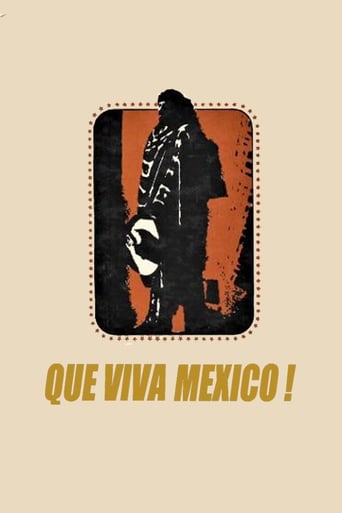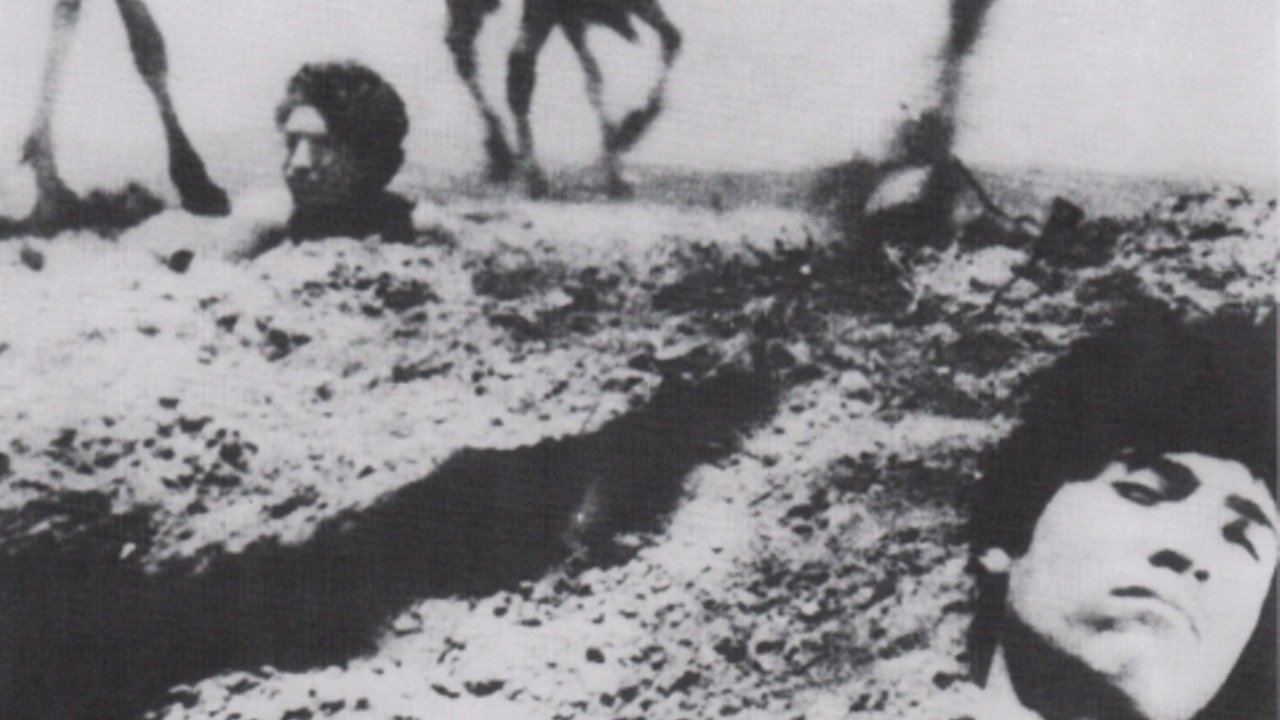Pierre Radulescu
1929: Sergei Eisenstein, Grigori Aleksandrov and Eduard Tisse headed West in search for contracts. A short documentary (unfinished) for a German client, then in France their first sound movie (Romance Sentimentale). Nevertheless the target was Hollywood, where Eisenstein would not succeed to find a contract (neither would Leni Riefenstahl, a couple of years later).After one year, in 1930, Upton Sinclair sponsored the Soviet team for a movie about Mexico. The movie couldn't be finished: lack of more money, lack of more time. The guys went back to Moscow and the filmed material remained at Upton Sinclair.There are several contradictory versions about what happened and why it happened; anyway, the footage arrived eventually at Moscow, in the seventies. Eisenstein and Tisse were dead by that time. Only Aleksandrov was alive. He restored the material and asked Sergei Bondarchuk to be the narrator: the result was да здравствует Мексика! (¡Que viva México!).The movie has six episodes: a prologue (Tisse moving slowly the camera over pyramids, Aztec sculptures, motionless people along carved deities, a country that's extremely diverse, where all ages of history coexist, timelessly and motionlessly) - a wedding (in a place where the society is still living in matriarchate) - a religious procession (superb images again: three youngsters carrying the cross, toward three priests like Aztec masks, facing three skulls) - a corrida - a story with three young peasants killed by a landlord and buried alive (Tisse gave here a very shocking image, while one of the most powerful cinematic scenes I have ever seen) - the epilogue (a joyful festival for the All Souls Day, a fabulous celebration of the Dead). A seventh episode was no more shot, Soldaderas, Eisenstein had in mind to focus it on women, the female Revolution soldiers.The restitution made by Aleksandrov seemed to me very honest - he didn't add anything, and, very important, he didn't edit the film - I'm sure Eisenstein would have put the episodes in parallel like in Griffith's Intolerance; Aleksandrov let them sequential, which was fortunate - one needs the genius of Griffith or Eisenstein to not fail. Only a titan has that power to tell four or five stories in the same time, following their rhythm.
fbmorinigo
The general plan of this film is strongly reminiscent of two films that Walt Disney made at the request of the State Department during World War II, namely SALUDOS AMIGOS and THE THREE CABALLEROS. The content here is serious and dramatic, the Disney approach is funny entertainment in cartoon form, but similarities are unmistakable.It is also my understanding that the U.S. State Department sent Orson Welles to Brazil to make a film. Reels and Reels of film were shot, the funding fathers were not given progress reports that convinced them that anything like they wanted would ever result, and the funding was cut off. The fate of the reels and reels of Welles shot film seems quite similar to what happened to Que Viva Mexico.As a personal evaluation and comment, I would like to add to what others have written, that I saw nothing in this film that could possibly be construed as blatant propaganda. Great films like CASABLANCA and GONE WITH THE WIND have a strong propaganda element to them, the first one, wartime "Us are Good Guys, Nazis are Bad" and the second one "Slavery and the Ku Klux Klan were the good guys, Dixie and the Old South were just wonderful". QUE VIVA Mexico has less propaganda.
MisterWhiplash
Considering that Que Viva Mexico was (mostly) made by Sergei Eisenstein, and funded by Upton Sinclair, the most happy surprise is that the film isn't overloaded with the kind of communist/socialist propaganda that would be immediately expected. It's not that this would be a bad thing in the technical sense; Eisenstein, on the front of being a pure visionary, couldn't be stopped no matter how thin he stretched himself for his means as a director who had to stay to party/country guidelines. And for Sinclair, the meatier the context the better the hyperbole. But with Que Viva Mexico! we get a view of the people and customs like out of a measured fever dream. We're given more-so the customs and the traditions, the practice of a marriage, the bullfights, some of the context of the history behind those 'Day of the Dead' parades. Only here and there are any blatant pleas seen and heard loud and clear (mostly involving the poorest of the poor in the lot).Actually, it could be something, in a sense, comparable to Werner Herzog in attempting the documentary form. It's not quite fiction, but it's presenting documentary in a stylized manner, where things aren't simply stock footage but very much a set-up of the construction of drama in the scenes and scene-location specific shots and angles. And like Herzog, Eisenstein has a poet's eye for visions that many might only see in the most remote history books or travelogues. While the accompanying narration for Que Viva Mexico is a little on the creaky end, there's no lack of splendor for the senses as far as getting an eye full of carefully picked locals (i.e. the girl Concepcion for the marriage scenes) or for mixing real documentary footage of the bullfight with careful constructed shots of the bullfighter before and after the fact. Even the music plays a nifty role in the dramatization of events. And here and there, especially as the film rolls along in its last third, a subtle sensation of the surreal drifts into the proceedings.Unfortunately, like It's All True for Orson Welles, Que Viva Mexico remains something of a carefully plucked fragment from a lost bit in the director's career. It's a minor marvel, and certainly more than a curiosity for the die-hard documentary or Mexican history buff, but it's stayed obscurer than Eisenstein's more infamous pieces (Potemkin, Alexander Nevksy) for a reason. Despite all the best intentions to simply reveal the cultural day-to-day workings and a little of the socio-political context of the Conquistadors' impact, it's a cool curiosity at best.
Claudio Carvalho
In 1931, Sergei M. Eisenstein, Grigori Aleksandrov and another crew member moved to USA, to work for Paramount, but the agreement never happened. The team decided to go to Mexico to make a movie about its history and culture. They joined some Mexican intellectuals, traveled around Mexico trying to assimilate the culture of the people, and shot film. However, for some unexplained reason, the laboratory that revealed the films in Hollywood, kept them and sent them to a Museum in New York, and Eisenstein was never able to edit his movie. In 1979, the Soviet Union government retrieved the fragments and Grigori Aleksandrov edited this movie, based on the notes and storyboard of Eisenstein. "¡Que Viva Mexico! - Da zdravstvuyet Meksika!" is divided in three parts. The first one (introduction) gives a historical panel of Mexico and the Mexican people. The second part is a fiction based on the dramatic fate of a bride, submitted to the powerful farmer of the area close to her wedding day, and her fiancé, his brother and two friends trying to rescue her. The conclusion of the story would be called ""Soldadera", the wives of the soldiers, and would be based on the revolution of Mexican people. Unfortunately Eisenstein had no more budgets to film the rest of the story. The last part, called Epilog, is about the celebration of the "memorial day' (day of the dead "dia de finados"), with the population wearing masks of skull and celebrating death. The footages are amazing, considering they were shot in 1931. My vote is seven.Title (Brazil): "Viva Mexico!


 AD
AD
